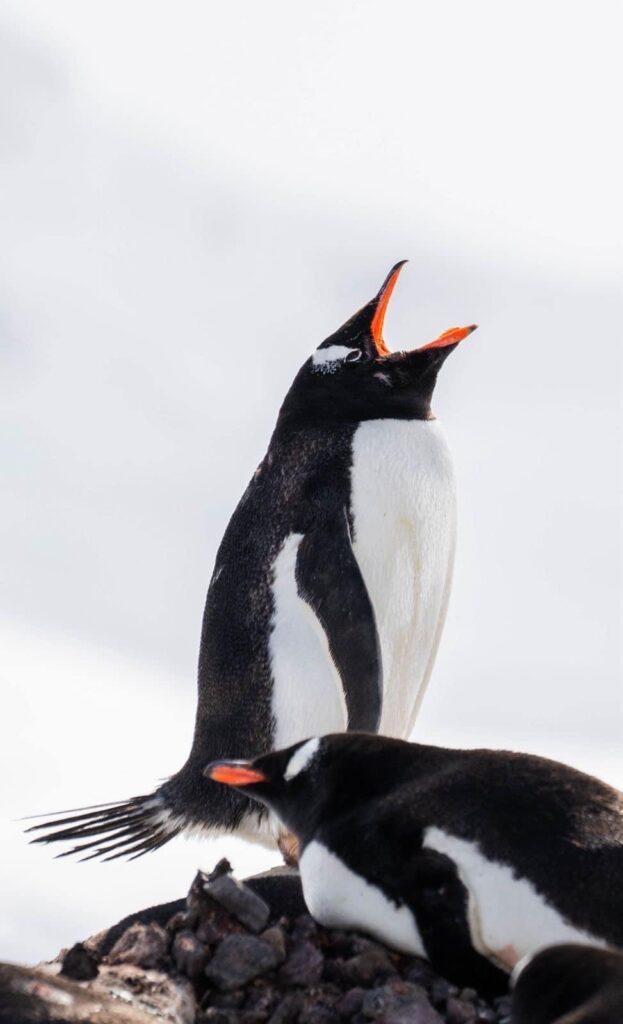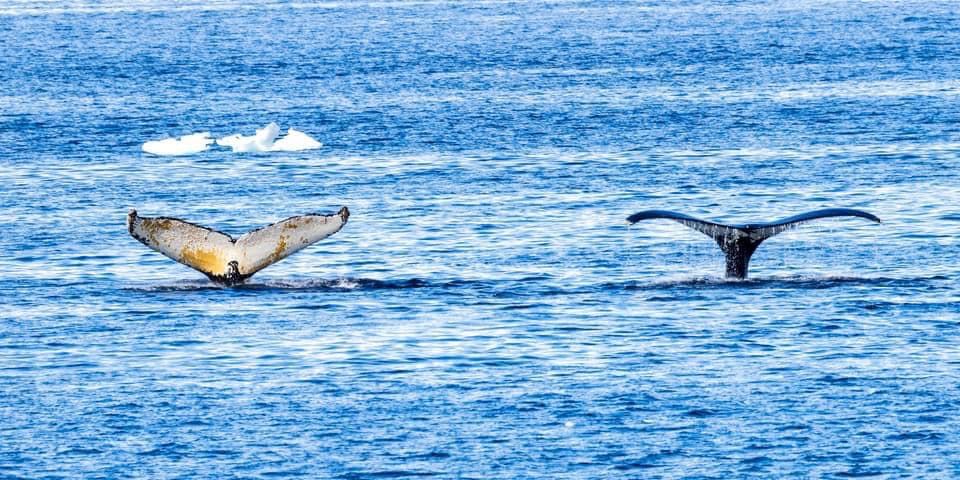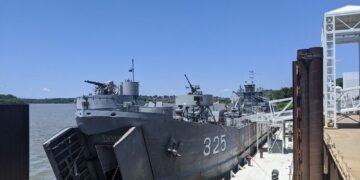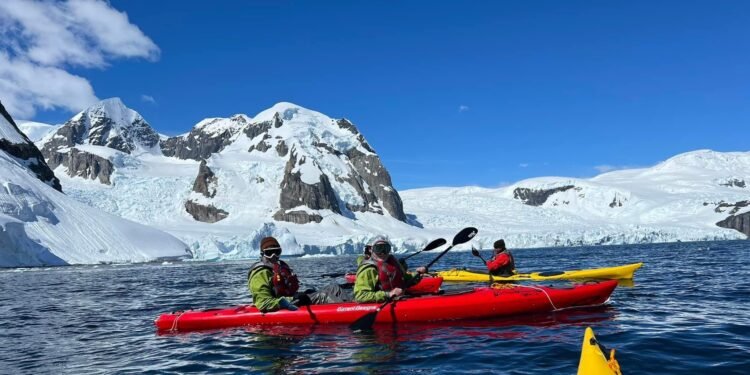(This article first appeared in the May print edition published April 30)
Often when people mention they’re going on a cruise, it brings to mind ports of call with sandy beaches, palm trees, resort wear, beverages with tiny paper umbrellas and a decidedly summer vibe.
But the change of latitude and attitude when Hendersonians Steve Wylie and Steve Gibson went on a cruise in the first days of this year wasn’t like that at all.
It was early January, but it was actually summer where they visited.
When they went on a shore excursion they took emergency provisions and had to be especially mindful of not tracking anything on their boots that would transmit disease to wildlife, such as avian flu.
The “sandy beaches” actually consisted of volcanic rock. Lots and lots of it.
And, their shore excursion conveyances included such vehicles as zodiacs, kayaks, special operations boats and even a submarine.
Wylie and Gibson were on an expedition that cruised beyond Cape Horn at the tip of South America (where the Atlantic and Pacific oceans meet) and across the turbulent Drake Passage to the Antarctic Peninsula.
This cruise offers sights of towering glaciers, snow-covered landscapes, massive icebergs and an abundance of wildlife.
“It far exceeded expectations,” said Wylie, noting that the destination was on the travel “bucket list” since both of them had already visited five other continents. “The depth of the color was surprising. It was just magical.”
At one point in his Facebook travelogue that kept vicarious travelers far and wide entertained for 13 days, Wylie wrote: “I’m running out of adjectives to describe all the splendor.”
One of the biggest attractions for taking this expedition was the wildlife. They saw lots of seals (including the Weddell species), humpback whales that congregated whenever the ship paused, penguins (including the Gentoo), petrels and other creatures, including plenty that were viewed by taking an excursion on a “yellow submarine” 275 feet below the ocean’s surface.
After spending a little “pre-cruise” time in Buenos Aires, Argentina, the expedition on the Viking Polaris launched from Ushuaia, Tierra del Fuego, Argentina, crossing the iconic Drake Passage to the northern tip of the “Last Continent.”
The expedition team prepped the passengers on the cold weather gear that the cruise line issued and on scientific experiments they could participate in over the following several days.
They promised sightings of colorful lichens on the exposed land, basalt cliffs, calving glaciers and snow-covered mountains.
But despite the cold weather gear, once they did step foot onto Antarctica there was a surprise.
“It’s not terribly cold,” Wylie wrote on Jan. 10, “although the wind chill is a factor.”
In fact, Gibson confirmed later, “it was warmer there than it was here (in Henderson). We never really felt cold.”
However on Jan. 11 at a location called Damoy Point, Wylie noted that winds were about 25 mph with gusts, and their captain was assessing whether it was advisable to go ashore.
Even at that, they could observe many penguins on the rocky coastline and some shelters that different explorers had used on previous adventures. Eventually that day they did set foot on land that day.
“Our first steps on Antarctica did not disappoint,” Wylie wrote. “It’s hard to describe the snow. It’s a bit wet, but still fluffy, and it reflects the blue light.”
Later that same day, they also got into the submarine. The submarine pilot gave them an orientation of what they would see at the depth of 235 feet, such as starfish, brittle stars, sun stars, sponges and corals along with “sea snow,” which was described as snow and ice mixed with plankton illuminated by the sub’s spotlights.
The following day’s activities included taking a zodiac to get “up close and personal” with icebergs and participating in the launch of a biodegradable weather balloon (“citizen science” in support of the more than 40 scientists on the expedition that included marine biologists, geologists, oceanographers and specialists in avian species).
The data from the balloon is sent to NOAA and global weather centers to help populate models for weather forecasting.
The presence of tourists on board alongside scientists on an expedition ship helps fund scientific research, Wylie noted. Other activities include collecting ocean water samples and helping to measure the presence of microplastics and polyester fibers.
On another adventure, travelers spent some time kayaking while penguins swam alongside. And at D’Hainaut Island in Mikkelson Harbor, they visited an Argentine refuge hut and saw the shell of an old whaling boat and many whale bones.
On their final day in Antarctica before recrossing the Drake Passage, they stopped off at Greenwich Island, which is part of the South Shetland Islands that provide a protective barrier to the Antarctic peninsula. There they saw Gentoo penguins and their chicks, which looked to be almost ready for the water.

“The chicks have shed their downy feathers and revealed their waterproof ones,” Wylie wrote, noting that they were about half the size of their parents. In that same location, they observed some kind of grass or moss, “the first living vegetation that we have seen since we arrived in Antarctica.”
Gibson said that one of the things that stood out to him from this trip was the “ridiculously long days.”
“You could see the sun kiss the horizon at 11:45 p.m.,” he said.
When they were approaching the end of their journey, taking stock of the television display that showed the trail of where they’d been traveling was eye-opening.
“We haven’t really seen much of Antarctica, but what we have seen has been magnificent,” Wylie wrote.
“It’s always bittersweet to say goodbye to our home for the past 11 days, but it’s much more difficult to bid farewell to the new friends we made during that time,” he said, adding that there were travelers of all ages on this expedition. “We are enriched by the human connection as well as from the incredible beauty of the 7th Continent.”
“We’ve made lifelong friends,” Gibson added. “I’ll definitely carry memories of this trip for a very long time.”





















